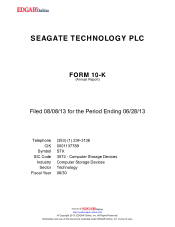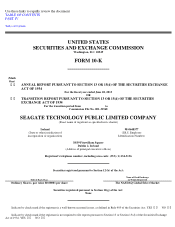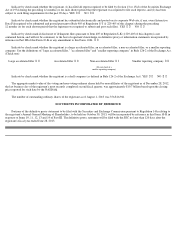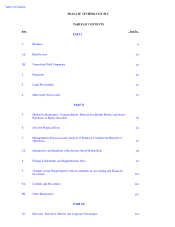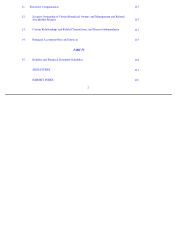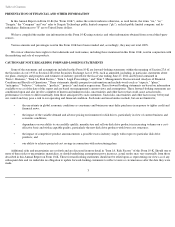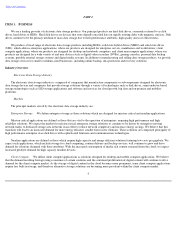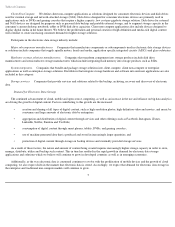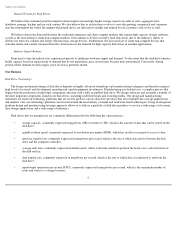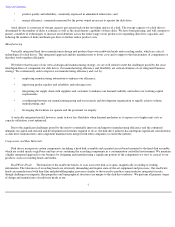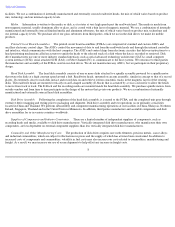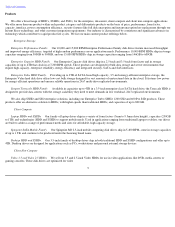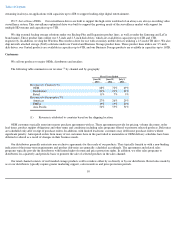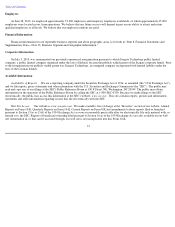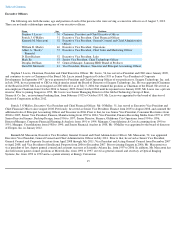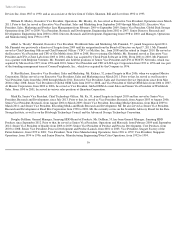Seagate 2012 Annual Report Download - page 9
Download and view the complete annual report
Please find page 9 of the 2012 Seagate annual report below. You can navigate through the pages in the report by either clicking on the pages listed below, or by using the keyword search tool below to find specific information within the annual report.
Table of Contents
Demand Trends for Disk Drives
We believe that continued growth in digital content requires increasingly higher storage capacity in order to store, aggregate, host,
distribute, manage, backup and use such content. We also believe that as architectures evolve to serve the growing commercial and consumer
user base throughout the world, the manner which hard drives are delivered to market and utilized by our customers will evolve as well.
We believe that in the foreseeable future the traditional enterprise and client compute markets that require high capacity storage solutions,
as well as the data intensive client non-compute markets, will continue to be best served by hard disk drives due to the industry's ability to
deliver cost effective, reliable and energy efficient mass storage devices. Furthermore, the increased use of client non-compute devices that
consume media rich content streamed from the cloud increases the demand for high capacity disk drives in nearline applications.
Industry Supply Balance
From time to time the industry has experienced periods of imbalance between supply and demand. To the extent that the disk drive industry
builds capacity based on expectations of demand that do not materialize, price erosion may become more pronounced. Conversely, during
periods where demand exceeds supply, price erosion is generally muted.
Our Business
Disk Drive Technology
The design and manufacturing of disk drives depends on highly advanced technology and manufacturing techniques and therefore requires
high levels of research and development spending and capital equipment investments. Manufacturing our disk drives is a complex process that
begins with the production of individual components and ends with a fully assembled disk drive. We design, fabricate and assemble a number of
the most important components found in our disk drives, including read/write heads and recording media. Our design and manufacturing
operations are based on technology platforms that are used to produce various disk drive products that serve multiple data storage applications
and markets. Our core technology platforms are focused around the areal density of media and read/write head technologies. Using an integrated
platform design and manufacturing leverage approach allows us to deliver a portfolio of disk drive products to service a wide range of electronic
data storage applications and a wide range of industries.
Disk drives that we manufacture are commonly differentiated by the following key characteristics:
• storage capacity, commonly expressed in gigabytes (GB) or terabytes (TB), which is the amount of data that can be stored on the
disk drive;
• spindle rotation speed, commonly expressed in revolutions per minute (RPM), which has an effect on speed of access to data;
• interface transfer rate, commonly expressed in megabytes per second, which is the rate at which data moves between the disk
drive and the computer controller;
• average seek time, commonly expressed in milliseconds, which is the time needed to position the heads over a selected track on
the disk surface;
• data transfer rate, commonly expressed in megabytes per second, which is the rate at which data is transferred to and from the
disk drive;
• input/output operations per second (IOPS), commonly expressed in megabytes per second, which is the maximum number of
reads and writes to a storage location;
6

